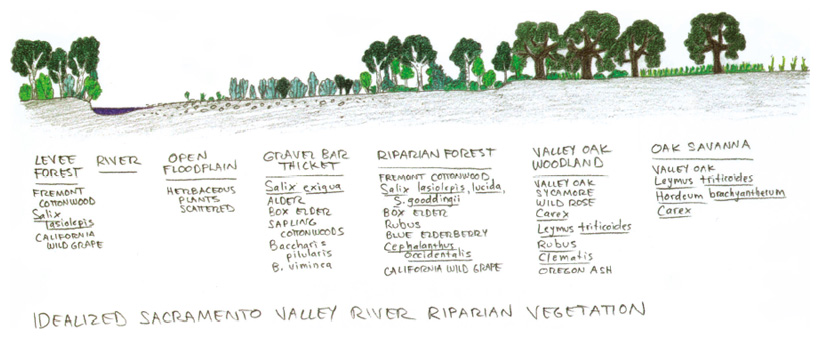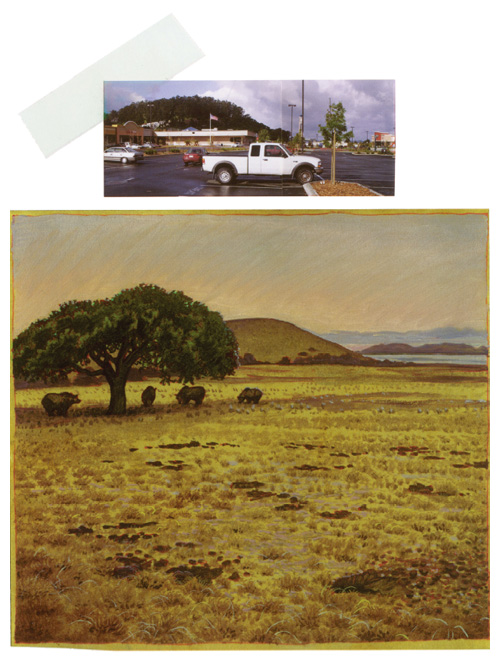
This Article From Issue
January-February 2011
Volume 99, Number 1
Page 89
DOI: 10.1511/2011.88.89
Over a period of 30 years, artist-naturalist Laura Cunningham assisted with biologists’ field studies, researched oral and written histories, and traveled around California with sketch pad and paints to observe declining species and relict habitats. In her new work of historical ecology, A State of Change: Forgotten Landscapes of California (Heyday Books, $50), she reconstructs how some of the state’s landscapes might have appeared in prehistory and shows how they have changed over time. The book will be an illuminating reference for conservationists and urban planners as well as anyone who wants to know California’s landscapes more intimately. And it’s a pleasure to read.

From A State of Change.
Cunningham represents data with hand-drawn diagrams (like the one shown above) that are packed with information and carry a sense of immediacy. The text is clear and thoughtful, and it’s supported by an extensive bibliography. And the book is full of her field sketches, whose expressiveness and economy of line are refreshing. The drawings are often accompanied by lively notes (a sea otter’s movements, she writes, are “fluid & rolling, like a Slinky toy”).

From A State of Change.
At the heart of the book are Cunningham’s oil paintings, imagined landscapes of the distant past. Many of these are paired with present-day photographs. Readers who know California will enjoy seeing familiar views anew, but the paintings will be fascinating, and the contrasts poignant, even to those who have never visited the state. Above, grizzly bears are shown foraging for acorns on a plain that today is the parking lot of a shopping center in the Bay Area city of Albany, near the author’s childhood home. Personal and ecological history converge; the result is a loving and discerning portrait that encourages us to imagine how the place might best be treated in the future.
All places deserve to be observed and documented with this kind of wide-ranging attention. Let’s hope that such efforts are supported wherever people like Cunningham are moved to undertake them.
American Scientist Comments and Discussion
To discuss our articles or comment on them, please share them and tag American Scientist on social media platforms. Here are links to our profiles on Twitter, Facebook, and LinkedIn.
If we re-share your post, we will moderate comments/discussion following our comments policy.